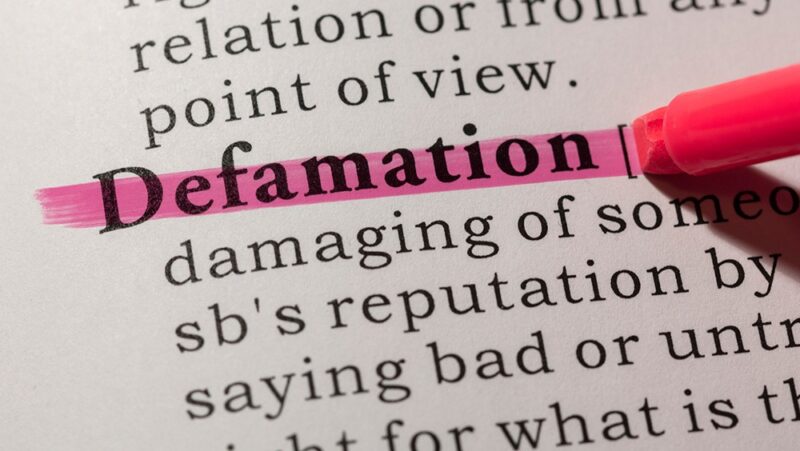True Threats: Is It Illegal to Threaten Someone?

Most speech, including what many people consider offensive and hurtful hate speech, is protected free speech by the First Amendment. But there are limits. Enter, true threats.
Is it illegal to threaten someone? Does it matter who is being threatened?
If you say "I'm going to kill you" to someone, that can be a serious crime. But it is not necessarily illegal.
The answers depend on whether the speech is a "true threat."
Let's look at when speech is a true threat that is not protected by the First Amendment.
What is a true threat?
A true threat is a statement that puts someone in fear of bodily harm or death.
Whether a statement is a true threat depends on:
- What the speaker intended and their state of mind.
- Whether they knew how their speech would affect the receiver and said it anyway.
- Whether they could reasonably carry out the threat.
- How the receiver reacted.
1. What the speaker intended
The Supreme Court defined true threats in Virginia v. Black in 2003. It said they are "those statements where the speaker means to communicate a serious expression of an intent to commit" specific illegal violence.
The intent of the speaker, rather than the meaning to those receiving the message, was held as most significant.
2. What the speaker knew about the effects of their speech
In the 2023 case Counterman v. Colorado, the court redefined how a true threat is evaluated.
Freedom Forum First Amendment Specialist Kevin Goldberg broke down the case, writing, in part:
Billy Counterman was convicted of stalking after sending more than a thousand online messages – many aggressive and intimidating – to musician Coles Whalen over two years. Whalen was terrified and had panic attacks. She eventually quit performing live.
Two Colorado courts held Counterman's messages were true threats because a reasonable person would have feared for their safety, as Whalen did.
Counterman argued that he never intended to instill fear. His attorneys said the speaker's intent should be the measure of a true threat.
In a 7-2 decision, Justice Elena Kagan agreed that the "reasonable person" standard is not sufficiently protective of free speech. Someone might be punished for words meant as a joke or intended as hyperbole. People could self-censor for fear that their words would be taken out of context or otherwise misconstrued. Such a real and pervasive "chilling effect" on speech can be enough to violate the First Amendment.
The court ordered a new trial for Counterman to evaluate his case based on a new standard: whether the speaker should have known the receiver would be scared by the words but said them anyway.
3. Whether the threat could be carried out
Time and distance between the speaker and the receiver can play a role in whether the speaker did anything illegal.
It is more likely that someone standing in front of you with a weapon saying, "I am going to kill you," is a true threat than someone sending you a message online.
But true threats can be made in person or online. The line between illegal threat and protected speech is largely in how the words are intended and received, not solely where, when and how they are said.
4. How the receiver reacted
Being told "I'm going to kill you" is not something anyone wants to hear. Words can cause fear and make you alter your life.
How the receiver reacts is part of whether the speaker's use of "I'm going to kill you" was an illegal act or protected speech.
For example: Someone sends you multiple letters with words cut out of magazines that say, "I'm going to kill you." With the letters are pictures of you in public places, suggesting the person who sent the letters knows your travel patterns and has been following you. This causes you to fear for your safety. You install security cameras at home, bolster your locks and change your travel patterns. You may even buy a firearm to protect yourself.
In this example, it's possible (though not guaranteed) the letter sender's actions were illegal.
Another example: You're at a political protest. Counterprotesters carry signs that have messages with which you disagree. A verbal back-and-forth ensues and gets heated, during which one of the counterprotesters says, "Shut up or I'll kill you." You respond, "You and what army, jerk?" and move on.
In this example, even with the heated protest environment, the phrase "I'm going to kill you" is more likely to be protected speech based on how you reacted.
How you react to words like "I'm going to kill you" makes a big difference in whether the words are an unprotected true threat.
Is it illegal to threaten the president of the United States?
Yes, under federal law, it is illegal to threaten the president, vice president and certain high-ranking officials in line for the presidency. Saying or writing "I'm going to kill you" to the president could prompt a visit from the Secret Service or FBI. But such threats must be investigated and shown to be true and actionable.
Political speech, even words that are aggressive or perceived as hateful, is largely protected speech.
The Supreme Court ruled on this in 1969 in Watts v. United States. A Vietnam War protester was charged with threatening President Lyndon B. Johnson for saying at a rally that "if they ever make me carry a rifle, the first man I want to get in my sights is LBJ." The court ruled Robert Watts "had engaged in a crude form of political hyperbole …." It said Watts made his statements during a political rally, and those who overheard his remarks laughed. In other words: not a true threat.
It is illegal to threaten the president and certain other high-ranking officials. But the test of whether the words are a true threat still applies, as the Supreme Court has ruled.
Why is it illegal to threaten someone only if the speech meets the high bar of a true threat?
The First Amendment prevents the government from restricting (or "abridging") speech.
For more than 200 years, the courts have interpreted what free speech means as our country matures and technology changes.
The general idea is that more speech is better, and the courts are the best place to resolve questions around speech.
But at some point, someone says something so outrageous that a speech-based response is impossible. That's a line that is crossed when a speaker makes a true threat, because the recipient fears physical harm.
The Supreme Court has found such true threats are not protected free speech under the First Amendment.
Freedom Forum fellows Gene Policinski, Lata Nott and David Hudson and staff writer Scott A. Leadingham contributed writing, research and background information for this guide.
What Is Defamation? Everything You Should Know
Watch: Can Government Officials Block You Online?
Related Content
$30,000 Giving Challenge
Support the Freedom Forum’s First Amendment mission by Dec 31st and double your impact.

